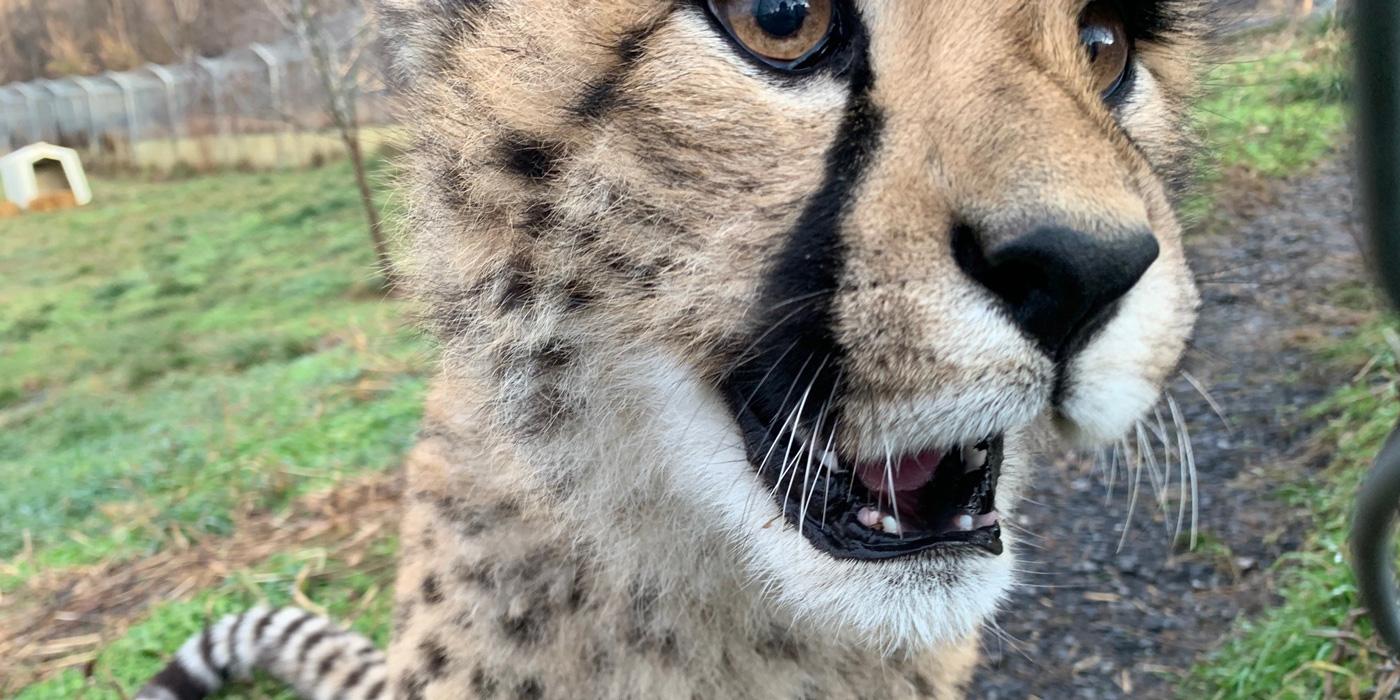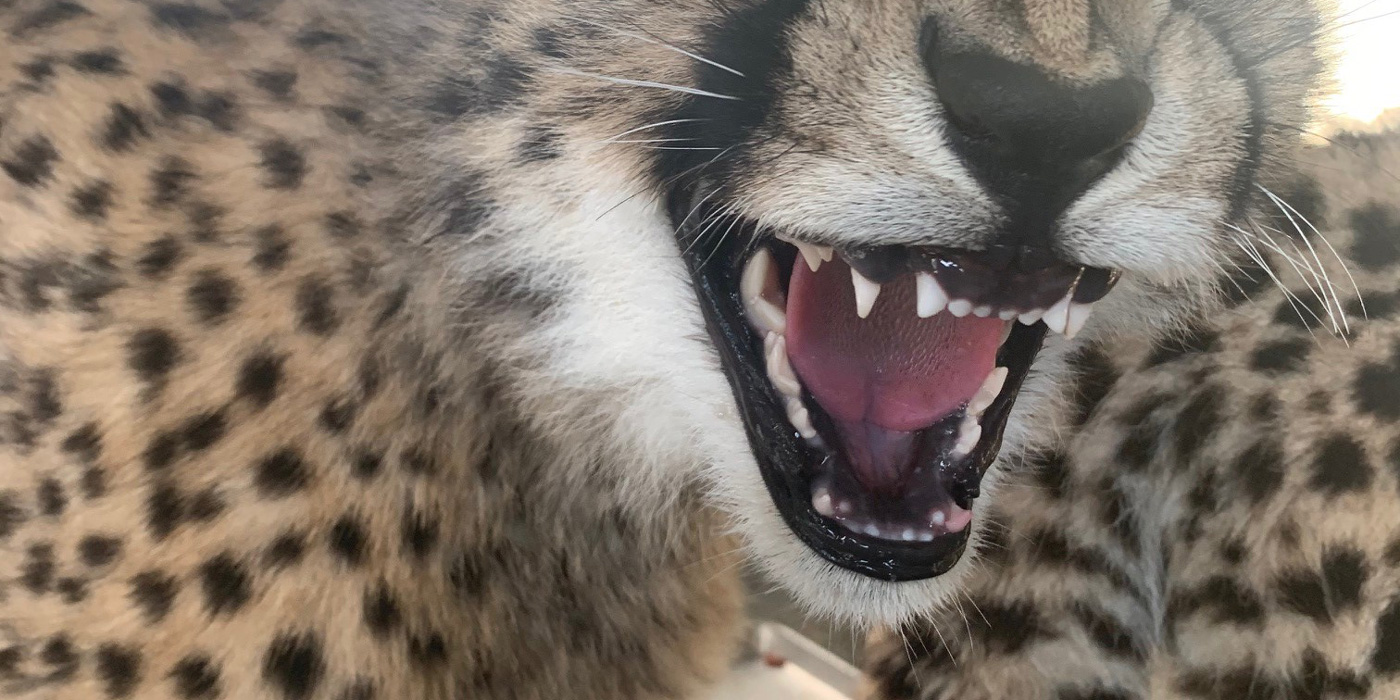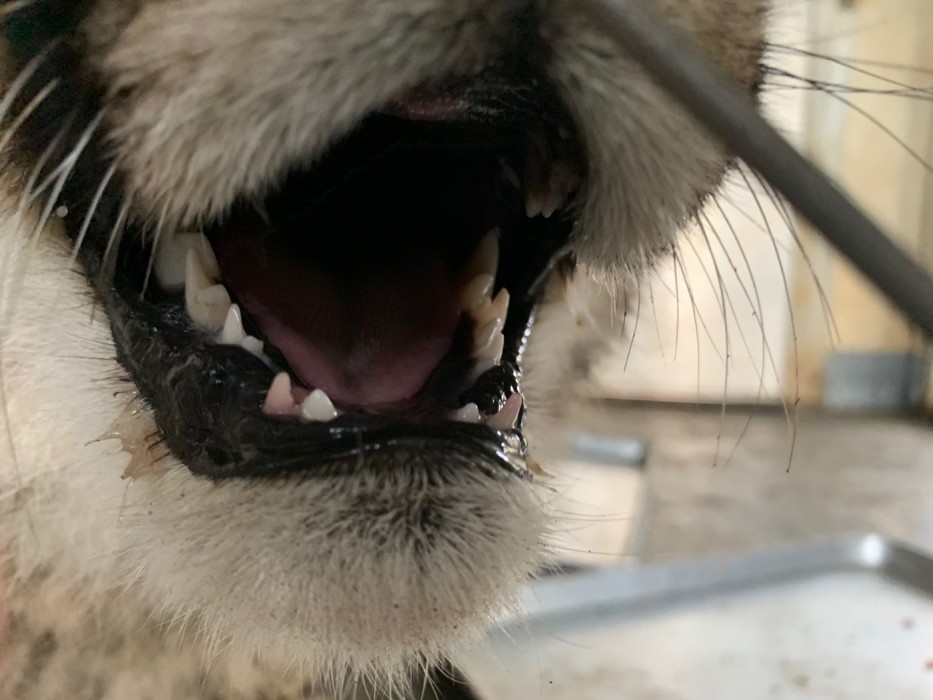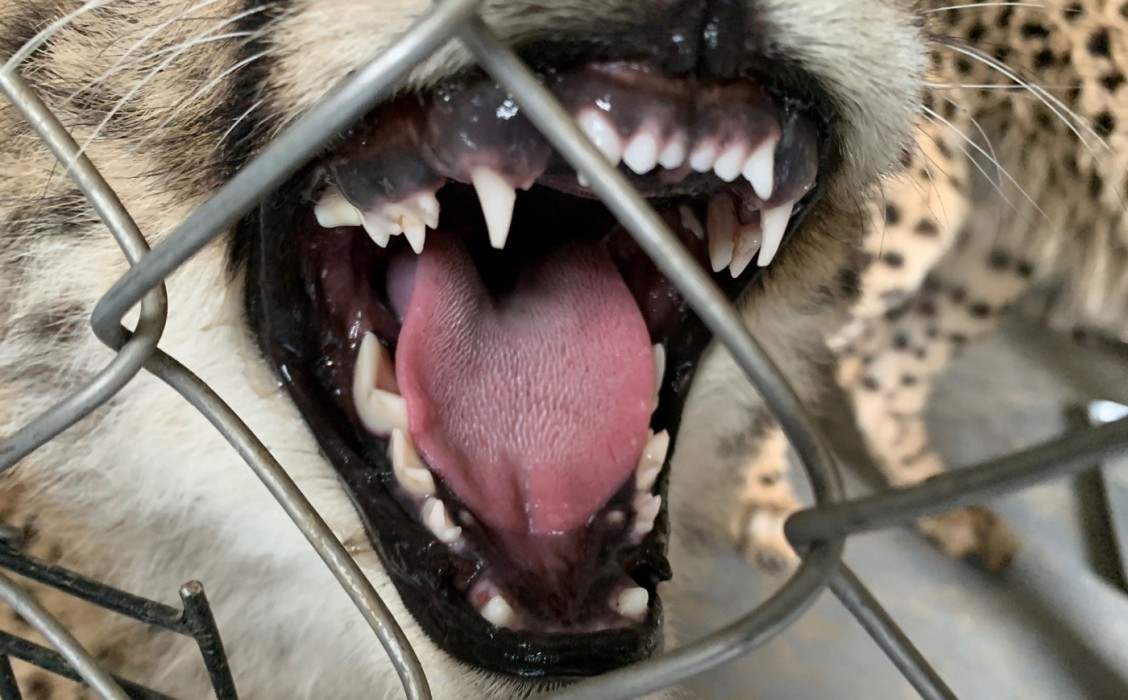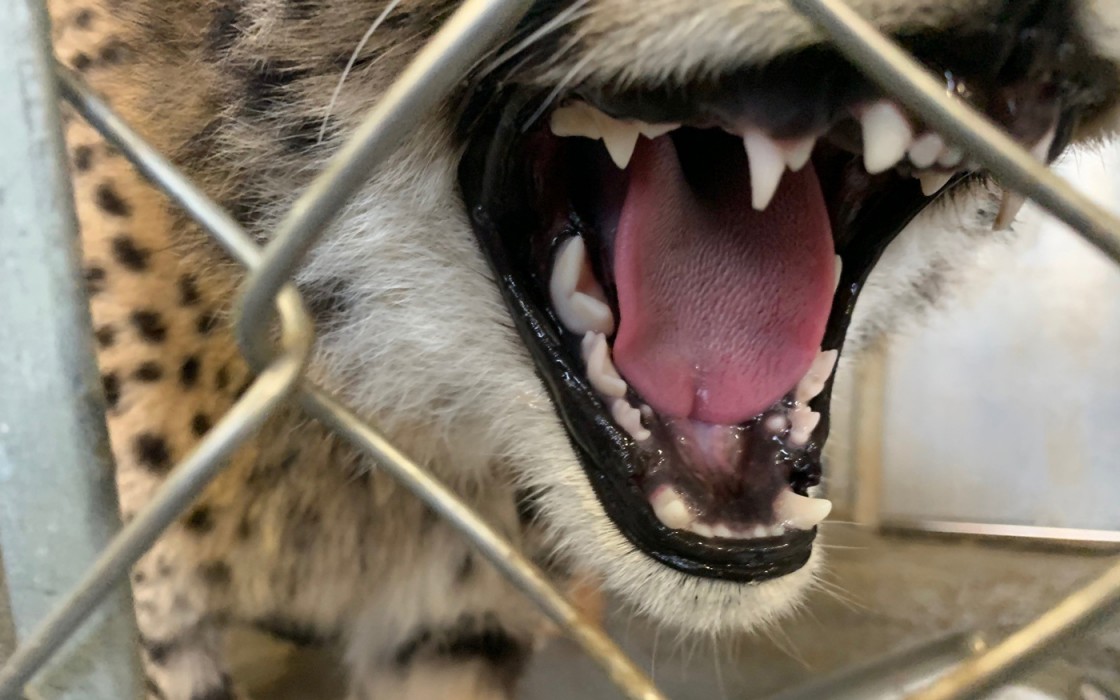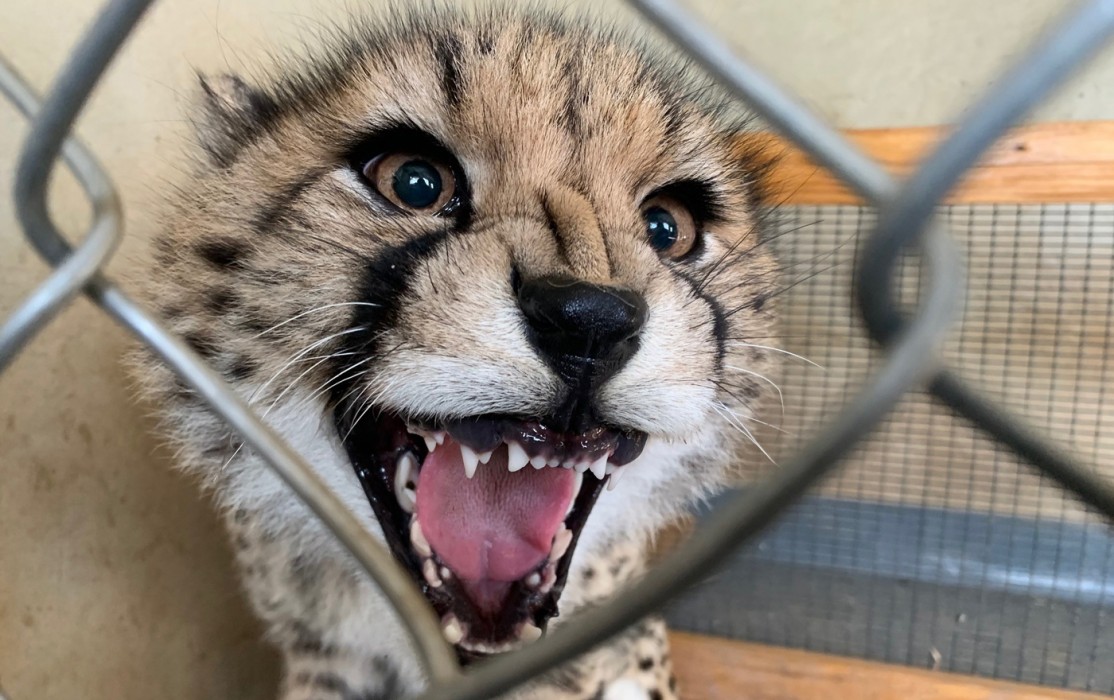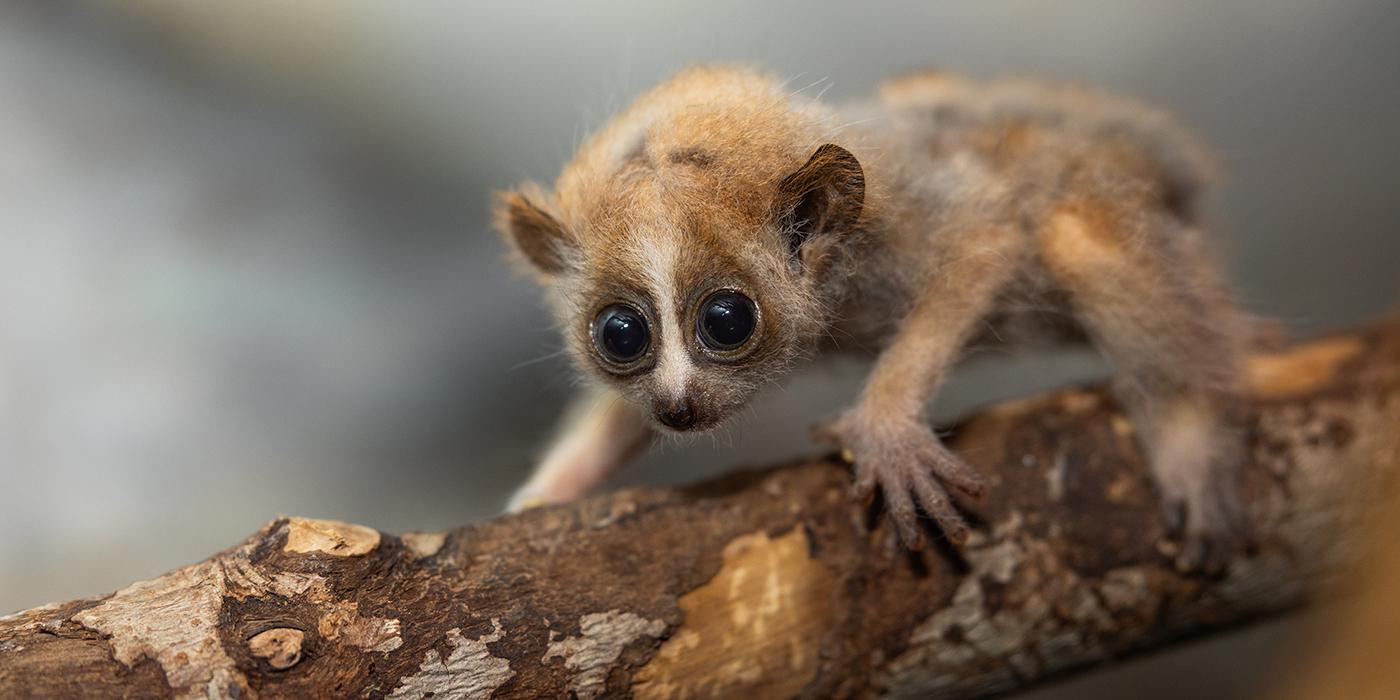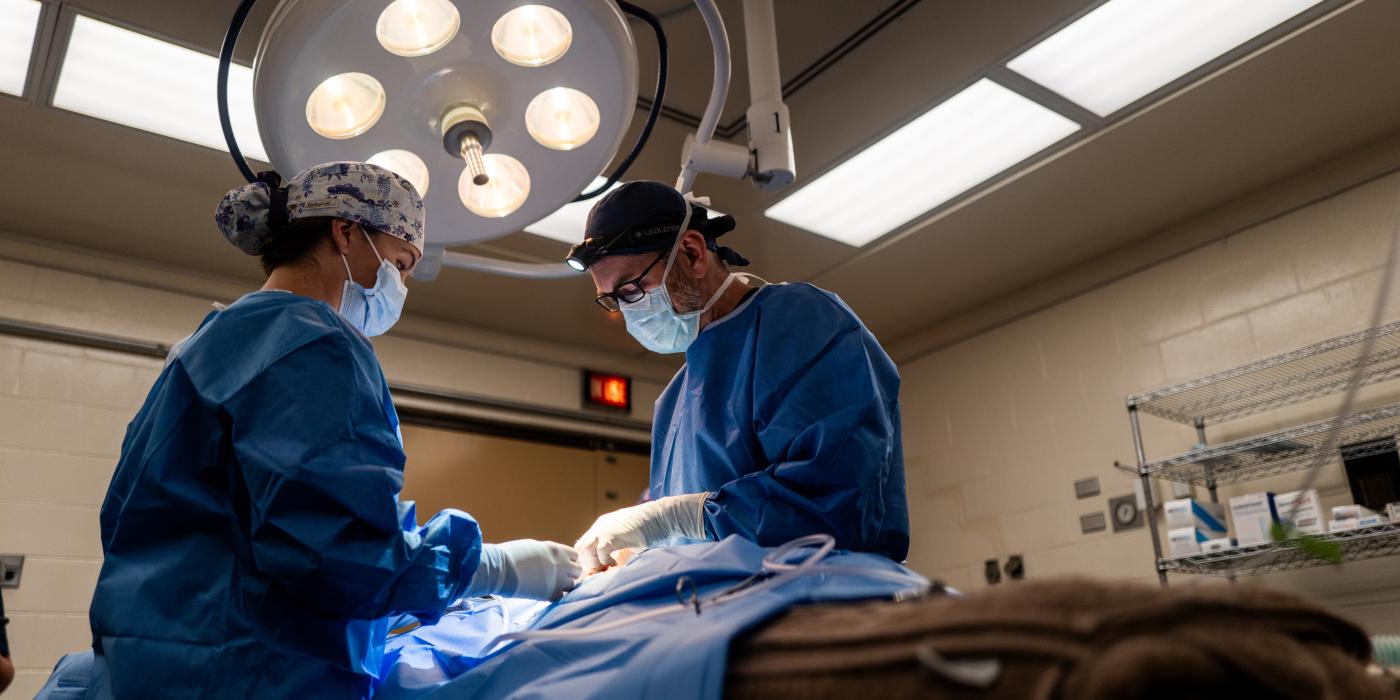Sink Your Teeth into Cheetah Cubdate #16
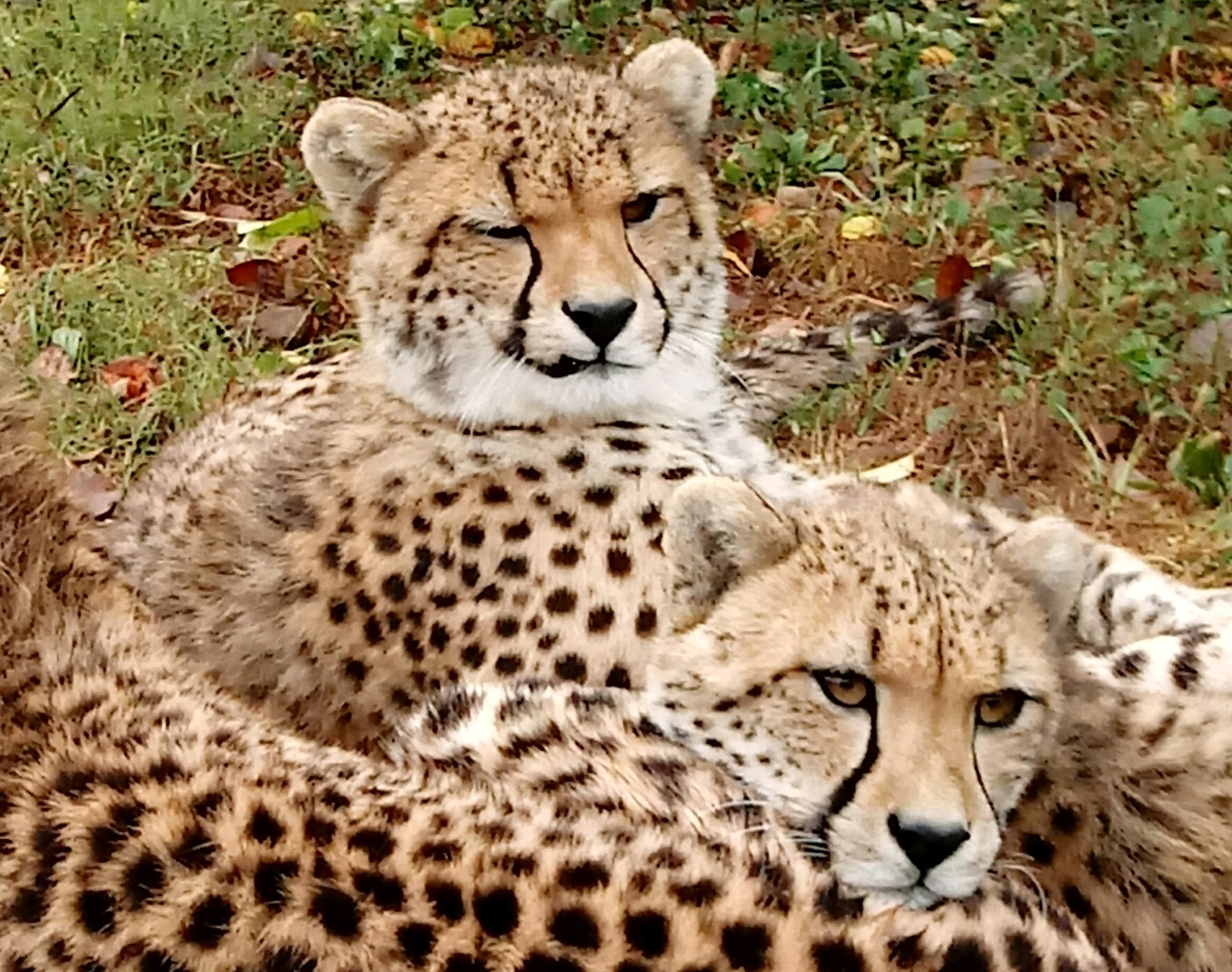
James, a 2-year-old male cheetah at the Smithsonian Conservation Biology Institute, is missing one of his adult canine teeth. While the missing tooth does not impact his health and well-being, the carnivore team is unsure how it happened. Keepers Adri Kopp and Amber Dedrick decided that they need to better document tooth development in cheetahs. Echo’s now 9-month-old cubs are the first litter to participate in this tracking!
Just like humans, cheetahs lose their baby teeth when their adult teeth come in. The timeline of when each tooth is lost and gained is slightly different for each cheetah, but keepers have been able to note general trends between all four of Echo’s cubs. The cubs grew and used their baby teeth until they were roughly 6 months old.
In December, keepers noticed the cubs’ bottom adult canine teeth erupting. This is a huge developmental milestone! When adult canines come in, cheetah cubs have what look like double teeth. Eventually, the adult teeth push the baby teeth all the way out. For Echo’s cubs, this happened at the beginning of January. Not long after the bottom baby canines were pushed out, keepers noticed the top canines and bottom premolars erupting behind the baby teeth.
Documenting each dental milestone helps keepers understand and ensure the cubs’ teeth develop correctly. To build their database, keepers are using whatever documented information they can find, as well as their past experiences with cheetah cubs. Echo has been a great model of what a cub’s mouth should look like once all its teeth come in.
Cheetahs have a unique facial structure because they are built for speed. Their skulls weigh less than the skulls of other big cats. Cheetahs also have large nasal passages, which allow for a greater intake of air when sprinting. This does not leave a lot of room for strong canine roots, making a cheetah’s canine teeth smaller than other big cats and carnivores.
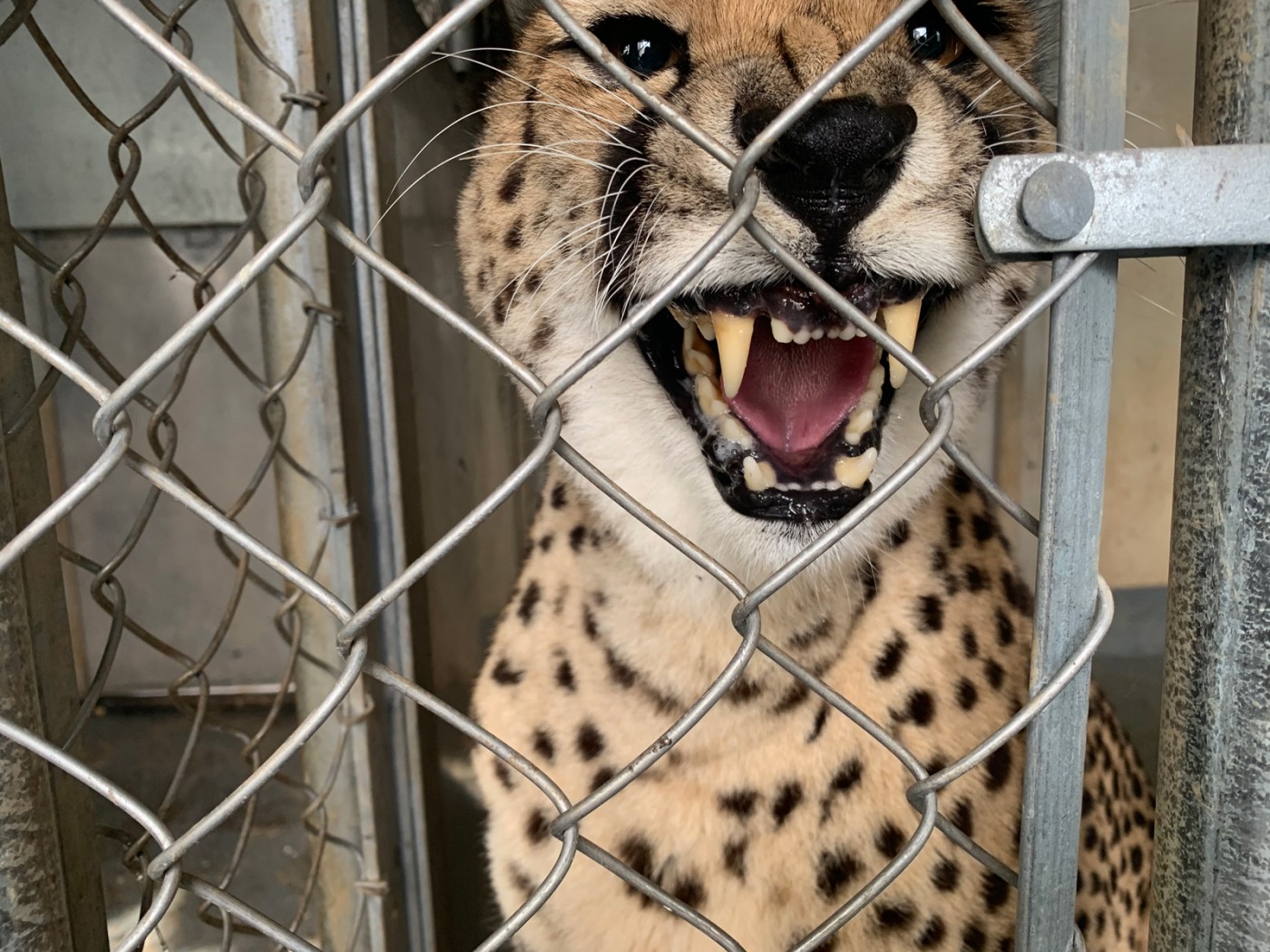
Echo has been a great model of what a cub’s mouth should look like once all its teeth come in.
Researchers do not know if cheetahs’ teeth adapted to suit the prey they hunt, or if how cheetahs hunt and eat is because of their teeth. Cheetah teeth development is a “chicken or the egg” sort of evolutionary question, but it is closely tied to their lifestyle.
Compared to other key predators in their native range, like lions and hyenas, cheetahs hunt smaller, midsize prey, such as springbok and gazelles. They rely on their speed and dew claws, or the claw located above and to the rear of the paw, to trip their prey. Once the prey falls, its neck must be small enough for a cheetah to grab so it can suffocate the prey.
Cheetahs’ teeth are also structured to take as much meat off their prey as fast as possible, because they have a high risk of losing their meals to stronger animals. A lion, on the other hand, will work at the bones of its prey to get every scrap. Its strength and size enable it to fight off most other animals that may want to steal its catch. Cheetahs focus on eating the organs and muscles and will flee if another animal goes in to steal the remains.
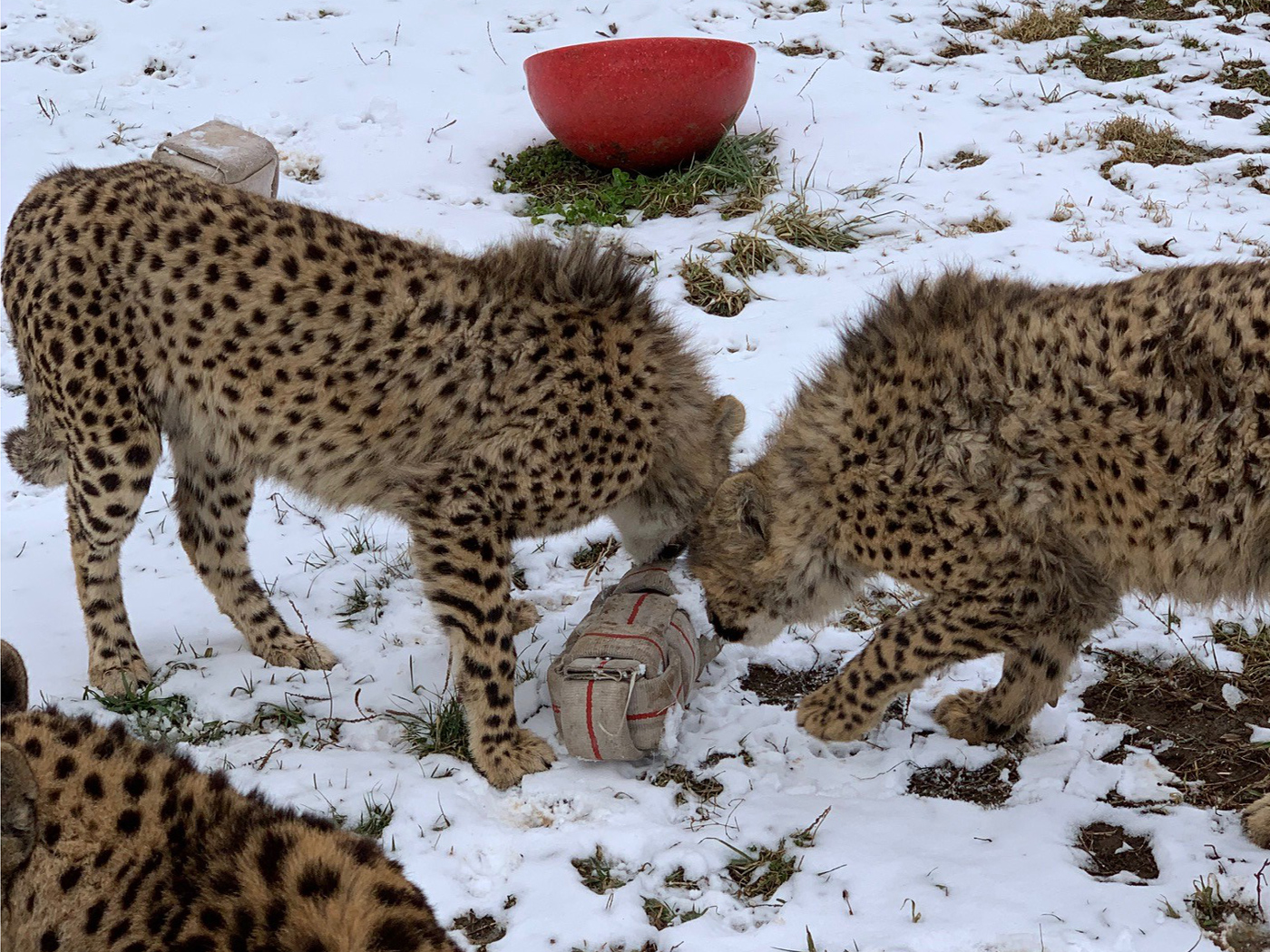
The cubs have been chewing on and playing with some toys that are made of fire hose, which is a strong enough material that they cannot tear through it.
At SCBI, the cheetahs’ teeth development is closely tied to the enrichment they receive. Upon hitting teeth-related milestones, cubs will chew on different items and may even try new foods. When Echo’s cubs were around 3 months old, keepers started to give them whole prey items. These carcass feedings keep the cubs’ teeth healthy by scraping off plaque and tarter. They also help with jaw development and are nutritionally great for growing cubs!
On Jan. 14, Jabari weighed 67 pounds (30.5 kilograms), Hasani was just under 64 pounds (29 kilograms), and Erindi and Amabala tipped the scales at 60 pounds (27.3 kilograms) and 59 pounds (26.8 kilograms), respectively. More recently, the cubs have been chewing on some toys that are made of fire hose, which is a strong enough material that the cubs cannot tear through it.
Cheetah biologist Adrienne Crosier and keepers Amber Dedrick, Adri Kopp and Becky Merritt contributed to this update.
Related Species:

